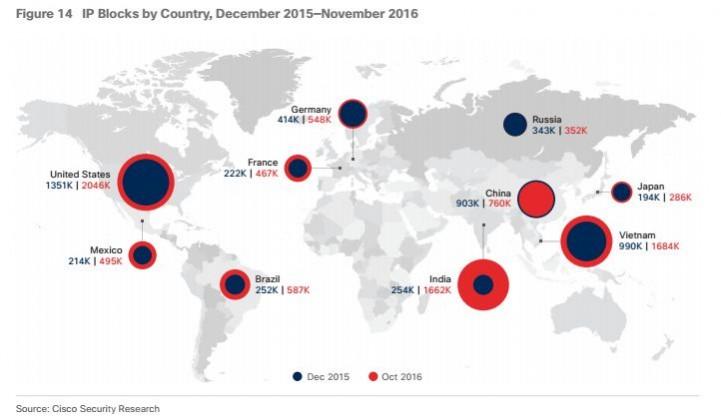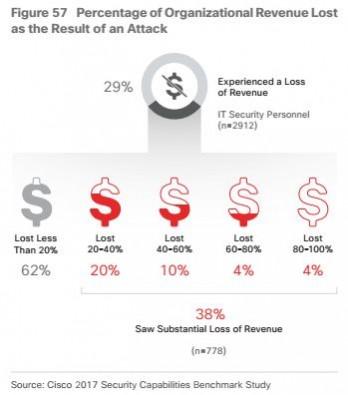Amid India's quest to become a less-cash economy by pushing for maximum online transactions, a study has revealed that the country had the highest percentage of IP connection blocks (spam emails) during December 2015-November 2016.
This is how Reliance Jio helped Facebook achieve record quarterly revenue
According to the Cisco 2017 Annual Cybersecurity Report, roughly 85 per cent of emails in India were spam, while Brazil came second with 57 per cent, followed by Mexico with 54 per cent spams.

The Cisco study found that more than one-third of organisations that have been subject to a cyber attack lost 20 per cent of revenue or more. Forty-nine percent of the respondents said their business had faced public scrutiny due to a security breach.

About 29 per cent of security professionals said their organisations experienced a loss of revenue as a result of attacks. Of that group, 38 per cent said that revenue loss was 20 per cent or higher. Online attacks also resulted in fewer customers as approximately 22 per cent of organisations said they lost customers as a result of attacks.
Worldwide, spam accounts for nearly 65 per cent of total email volume. Global spam volume is growing primarily due to large and thriving spam-sending botnets like Necurs. Necurs is a primary vector for Locky ransomware. It also distributes threats such as the Dridex banking Trojan.
According to Cisco threat researchers, about 8 per cent to 10 per cent of the global spam observed in 2016 could be classified as malicious. In addition, the percentage of spam with malicious email attachments is increasing, and adversaries appear to be experimenting with a wide range of file types to help their campaigns succeed.
In addition, the Cisco Visual Networking Index (VNI) Forecast and Methodology predicts that the volume of global internet traffic in 2020 will be 95 times as great as it was in 2005.
Consider these statistics from the most recent report, The Zettabyte Era—Trends and Analysis:
● Annual global IP traffic will pass the zettabyte (ZB) threshold by the end of 2016 and reach 2.3 ZB per year by 2020. (A zettabyte is 1000 exabytes, or 1 billion terabytes.) That represents a threefold increase in global IP traffic in the next 5 years.
● Traffic from wireless and mobile devices will account for two-thirds (66 percent) of total IP traffic by 2020. Wired devices will account for only 34 per cent.
● From 2015 to 2020, average broadband speeds will nearly double.
● By 2020, 82 per cent of all consumer Internet traffic globally will be IP video traffic, up from 70 per cent in 2015.















